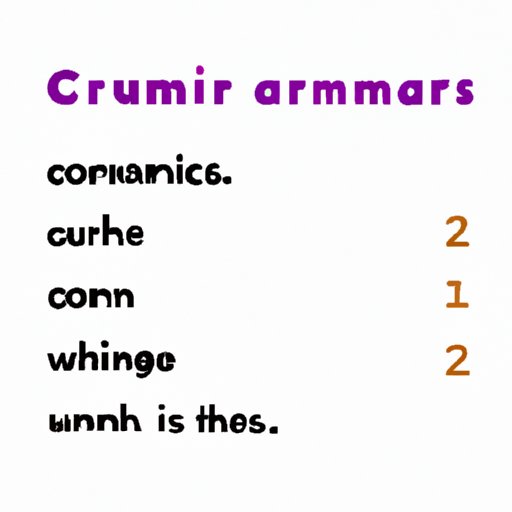
Introduction
The use of proper punctuation can make a significant difference in the clarity and effectiveness of writing. However, even experienced writers can struggle with using commas correctly, resulting in ambiguity, confusion, and mistakes.
One of the most common issues individuals face when writing is whether or not to use a comma before “and.” While using punctuation may seem straightforward, this particular issue requires careful consideration. In this article, we will explore the rules and guidelines for using commas before “and” to help you become a master of punctuation.
Mastering the Comma: To Use or Not to Use Before “And”
There are several rules for using commas before “and” in a sentence. In general, use a comma before “and” when it connects two independent clauses (a phrase that can stand alone as a sentence). If “and” is used to connect items listed in a sentence, a comma is not necessary.
For example, “I went to the grocery store, and I purchased milk and bread.” In this sentence, there are two independent clauses, “I went to the grocery store” and “I purchased milk and bread.” The comma before “and” separates these two independent clauses, making the sentence clear and concise.
However, if the sentence were, “I purchased milk, bread and eggs,” no comma would be necessary before “and.” This is because the three items in the sentence are not independent clauses, but rather a list of items.
Grammar Myths Debunked: Don’t Believe Everything You Hear About Commas and “And”
Grammar myths can be difficult to shake, especially when it comes to punctuation. There are many common misconceptions about using commas before “and,” causing confusion and, in some cases, incorrect usage. For example, “I was tired, and I yawned,” does not require a comma before “and” because there is only one independent clause in the sentence.
It is essential to fact-check grammar advice before incorporating it into your writing practices. When it comes to commas, there are often no hard and fast rules. Using common sense and following conventions are often the best options.
Commas Before “And”: A Comprehensive Guide for Writers
When it comes to using commas before “and,” there are several different contexts to consider. For example, when using “and” to join two adjectives, a comma is not necessary. However, when “and” is used to join two independent clauses, it typically requires a comma before it.
In the sentence “She was kind, beautiful and smart,” no comma is necessary before “and” because all three adjectives describe the woman in the sentence. However, in the sentence “She was kind, and she was beautiful,” there are two independent clauses that require a comma before “and.”
The Great Comma Debate: When Should You Use a Comma Before “And”?
While there are guidelines and rules regarding the use of a comma before “and,” there is a debate as to whether it should be used consistently. Some writers adhere to strict punctuation guidelines, while others believe that writing should be more fluid. Ultimately, consistency is essential in writing, and the use of a comma before “and” should follow your chosen style guide.
“And” or Not to “And”: Understanding the Importance of Commas in Writing
Using proper punctuation is not only important for clarity but also to avoid miscommunication. Misusing a comma can significantly alter the meaning of a sentence. For example, “Let’s eat, Grandma!” versus “Let’s eat Grandma!” illustrates the importance of accurately using commas.
Proper use of commas can save writers a lot of trouble and embarrassment. By taking the time to review and understand the rules of commas, you can significantly improve the quality of your writing.
Saving Your Writing with Commas: When You Should (or Shouldn’t) Use Them Before “And”
To recap, the use of commas before “and” can be tricky, but with careful consideration and attention to the rules, writers can master their punctuation skills. Understanding the different contexts in which a comma is required or not required can help prevent ambiguity and confusion.
Remember to fact-check grammar advice and adhere to consistent punctuation guidelines. Practice using commas in various contexts to improve accuracy and clarity in your writing.
Closing Remarks
The importance of using proper punctuation, including commas before “and,” cannot be overstated. By carefully considering the rules and guidelines outlined in this article, writers can improve their skills and produce clear, concise, and effective writing.
Ultimately, mastering the use of commas before “and” requires practice and attention to detail. Keep in mind the different contexts in which commas are necessary and the importance of consistency in following punctuation rules. Apply these lessons to your writing and watch your skills improve.




